How to lay stepping stones on grass: 4 easy steps for a stylish garden path
Learning how to lay stepping stones across your lawn will help protect your turf in style

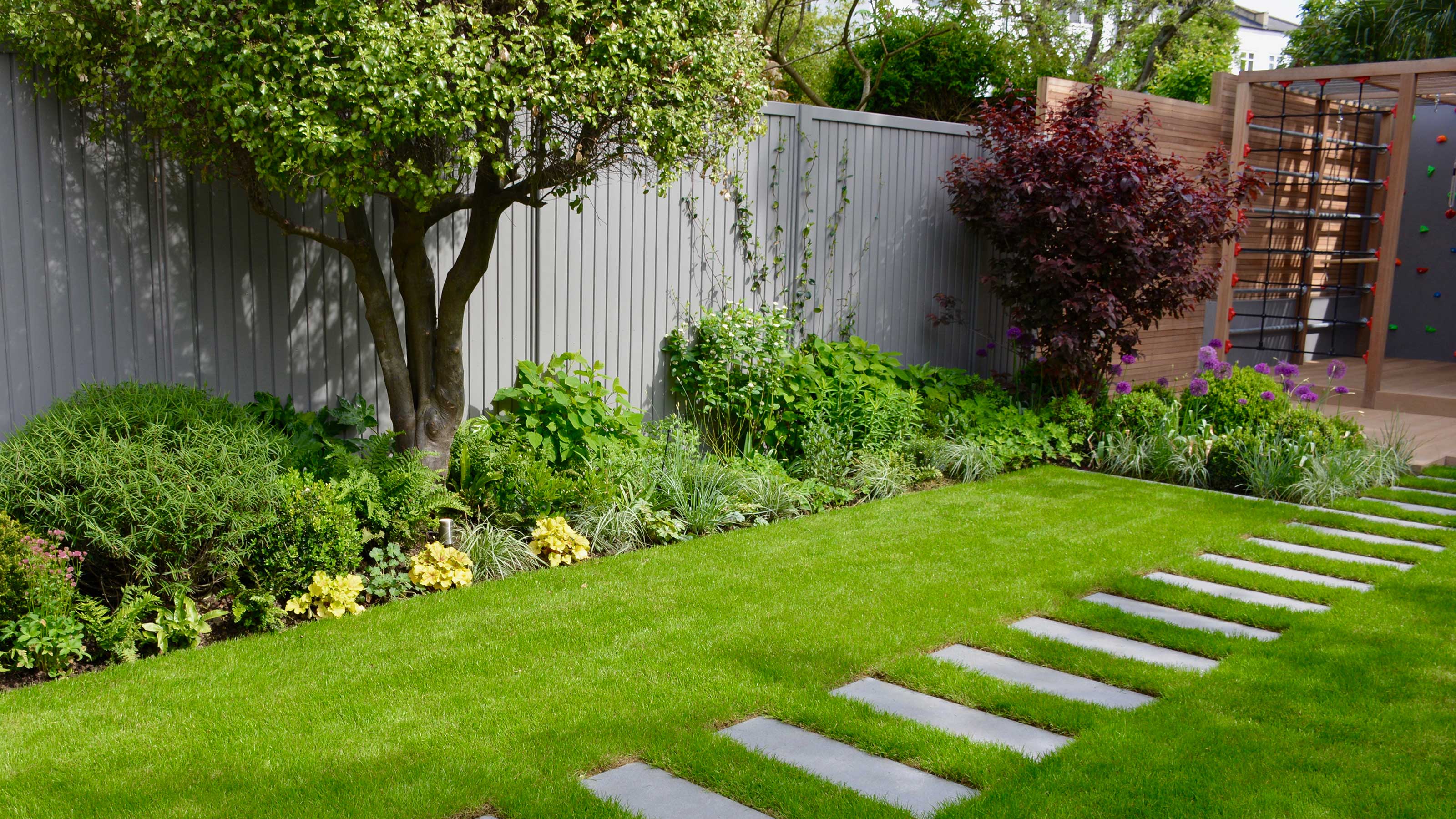
Learning how to lay stepping stones across a lawn is definitely worth doing if you're looking to add a new walkway to your plot quickly and easily. Plus, you'll save money as you won't need to pay for a pro to do it for you.
Not only are stepping stones one of the simplest garden path ideas to install, but they're also super stylish and work in all sorts of schemes. You can really get creative by customizing the design to suit you – from straight pathways made up of sleek porcelain pavers to winding walkways built with irregular-shaped, natural stone.
Of course, laying stepping stones across a lawn isn't just for the aesthetics, though. This sort of path will also help protect your turf from footfall, particularly in rainy or icy weather. Practical, pretty, and straightforward to do – it's a winner in our books.

How to lay stepping stones in 4 easy steps
Bringing stepping stone path ideas to life in your garden won't take long, and you only need a few simple tools and materials.
Gardening expert Ruth Hayes from Amateur Gardening shares her step-by-step tips on how to lay a stepping stone path so you can enjoy one of these attractive walkways in your plot.
1. Map out your path

Once you've chosen the paving for your walkway, it's time to map out your path.
'Start by laying the stones on the grass in the shape of the path you want, placing them close together so you can easily step from one to the next,' says Ruth. Whether you go for a straight or winding design is up to you – the former is good for modern plots that have lots of sleek lines, while the latter works well in an informal, cottage-style garden.
'Then, cut around each stone with a sharpened half-moon lawn edging tool,' she says.
2. Lift the turf
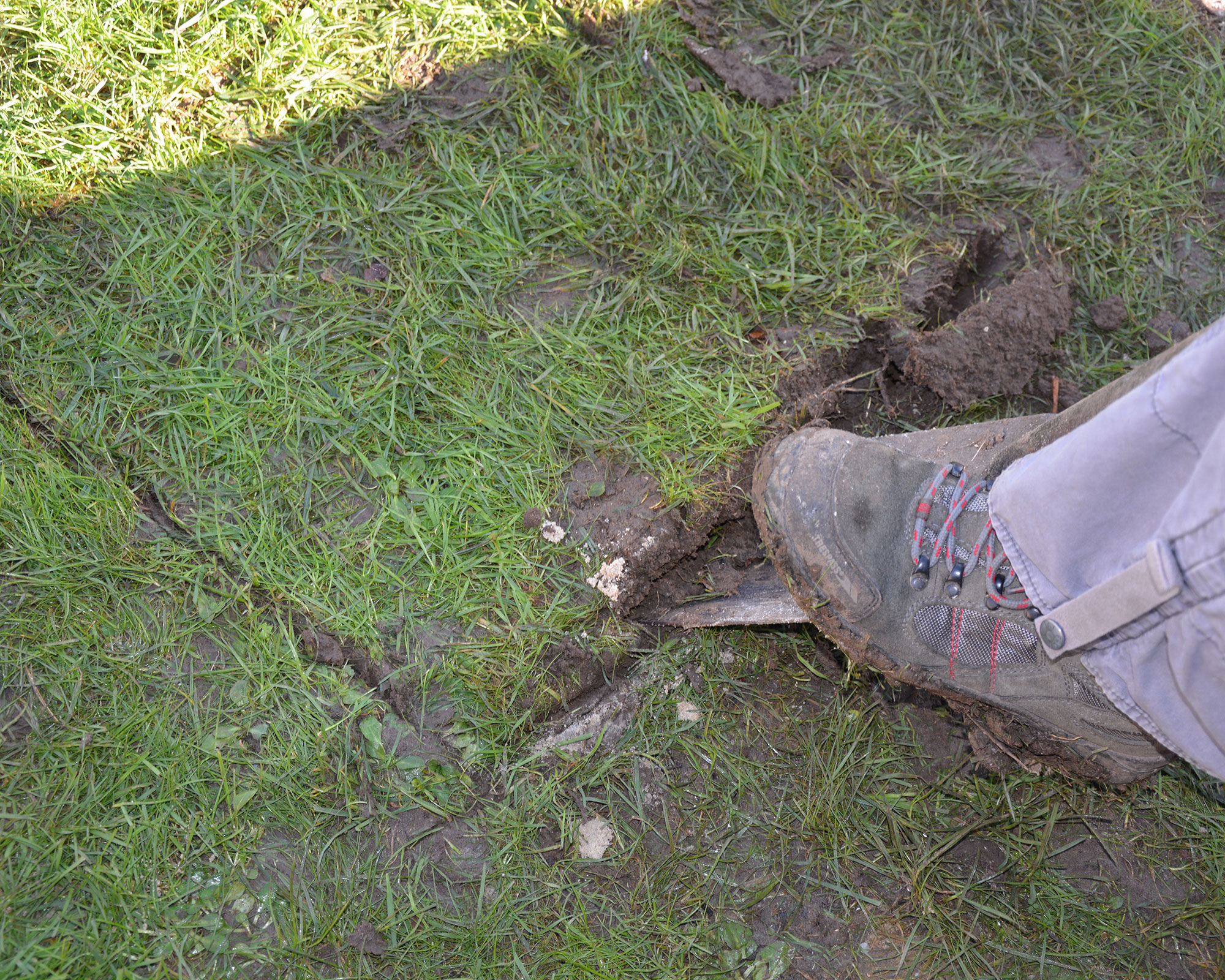
Next, move each stone out of the way. Then, remove the sections of turf you've just cut out, using a garden spade.
Remove the soil beneath each, too, to a slightly greater depth than the stones. 'This will ensure that when the stones are in place, they lie flat,' explains Ruth.
This makes mowing much easier, explains Garden Designer Tom Howard, as you can just run the mower over the stones without the blades chipping them.
3. Create a foundation
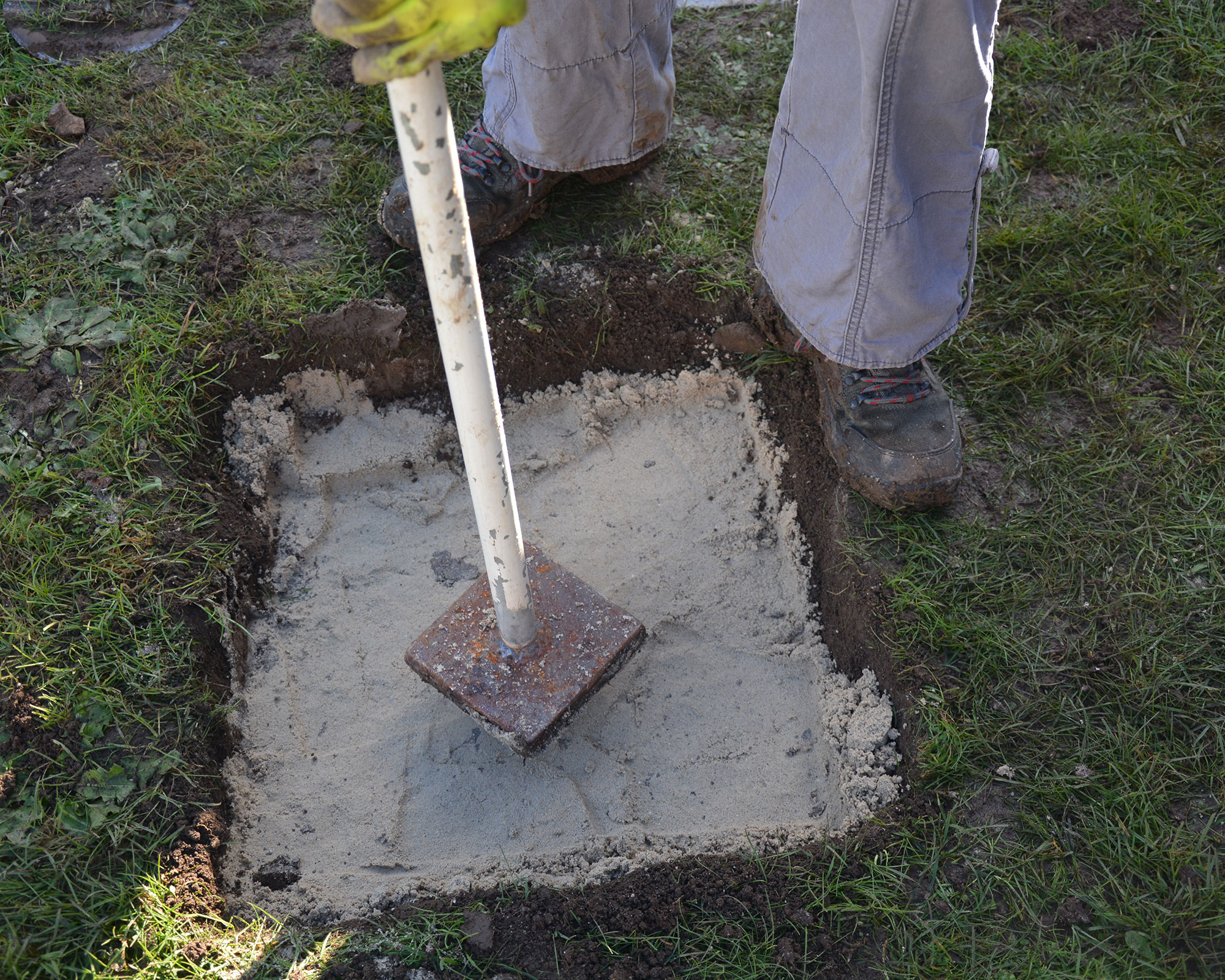
'Once the turf is removed, line the area where the stone will sit with a layer of sand and tamp it down to provide a flat and firm foundation,' instructs Ruth.
4. Soften the edges
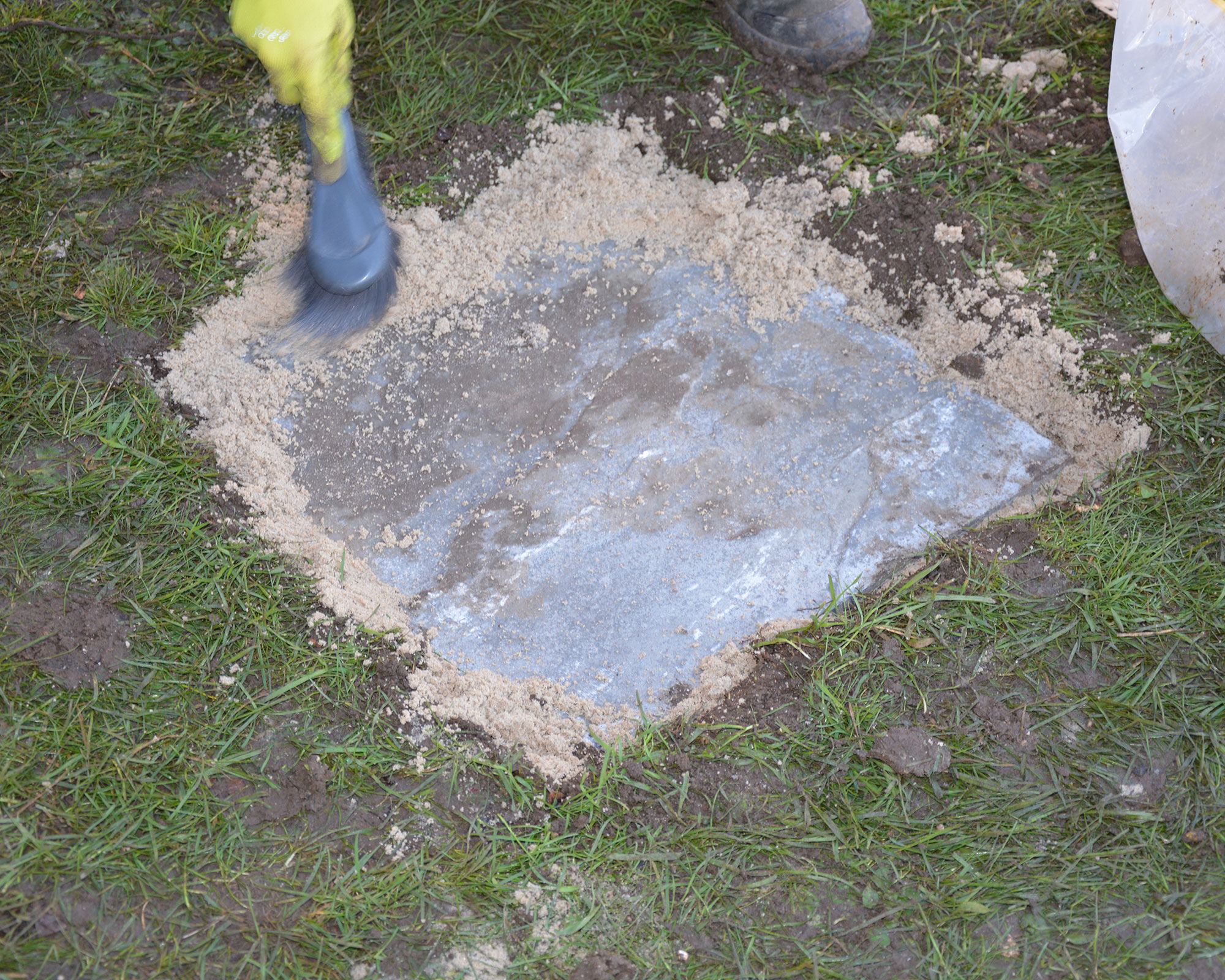
Place the stones in their newly-prepared holes. Then, brush more sand and a bit of soil around their edges. This helps them to bed in and look natural, says Ruth.
You can also sow some grass seed around the edge. The stones will soon settle into their new home and the grass will quickly grow around them.
Of course, stepping stone pathways aren't just for lawns. You could also try weaving them through a flower bed to make maintenance easier, or surrounding them with ground cover plants for a softer look that's perfect for a wildlife garden.
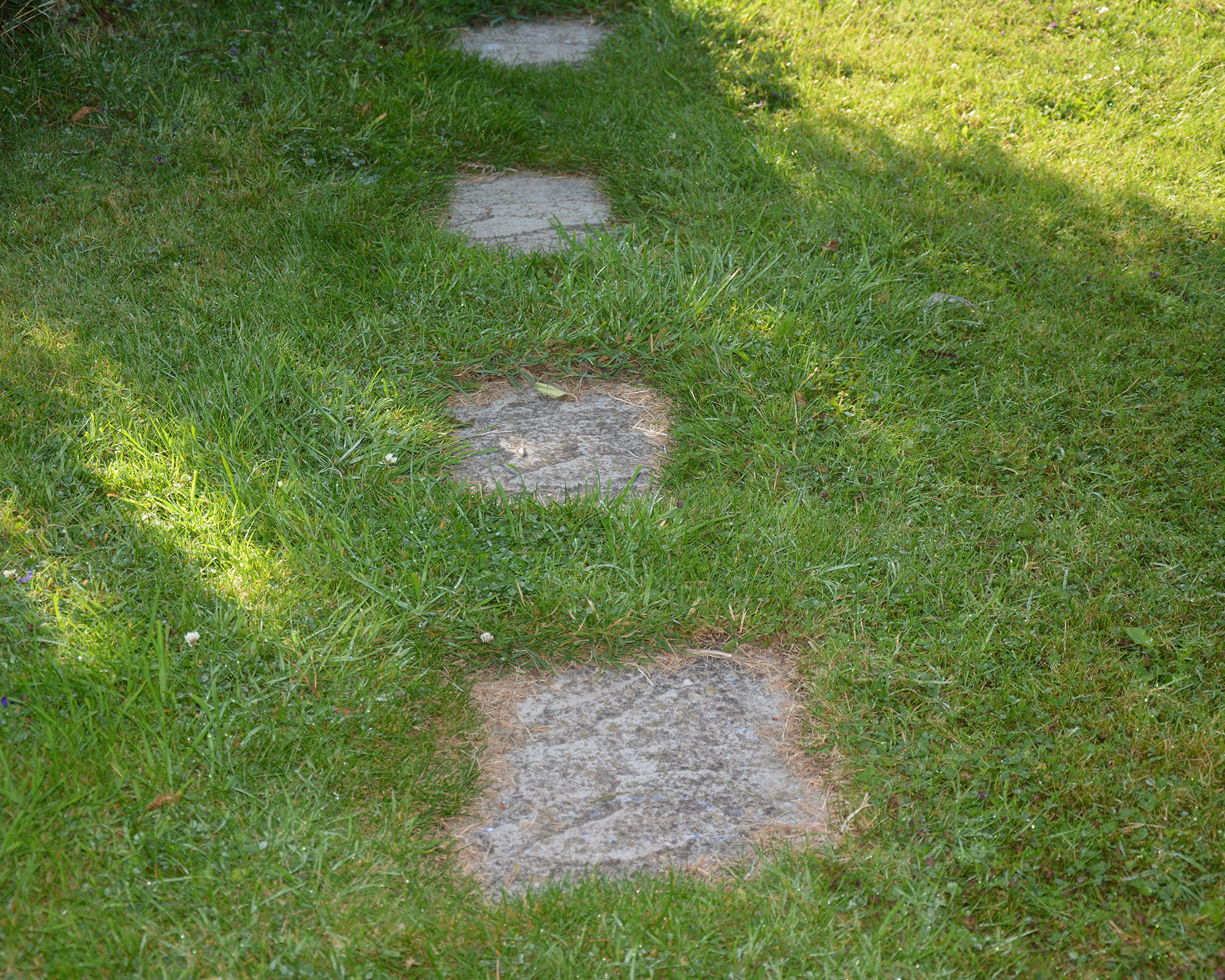
How far apart should stepping stones be laid?
In most cases, you'll want to be able to walk naturally while crossing your new stepping stone path, so it's important to bear this in mind when it comes to spacing out the pavers.
Arrange them so that your foot lands squarely on each one when you take normal strides, recommends the team at Lowe's.
If you're after a polished look, take the time to get the spacing consistent between each. Otherwise, 'you may be able to notice unevenly-spaced stepping stones when looking out over your garden,' says Katy Black from Verona.

Can you lay stepping stones directly on top of grass?
Just like when laying a patio, skipping the ground preparation to lay stepping stones directly on top of turf is not recommended, as tempting as it may be.
'Stepping stones should not be laid straight onto grass as they would most definitely cause a trip hazard and are likely to rock or move if not bedded properly,' advises Lee Dunderdale, Product Manager at Bradstone.
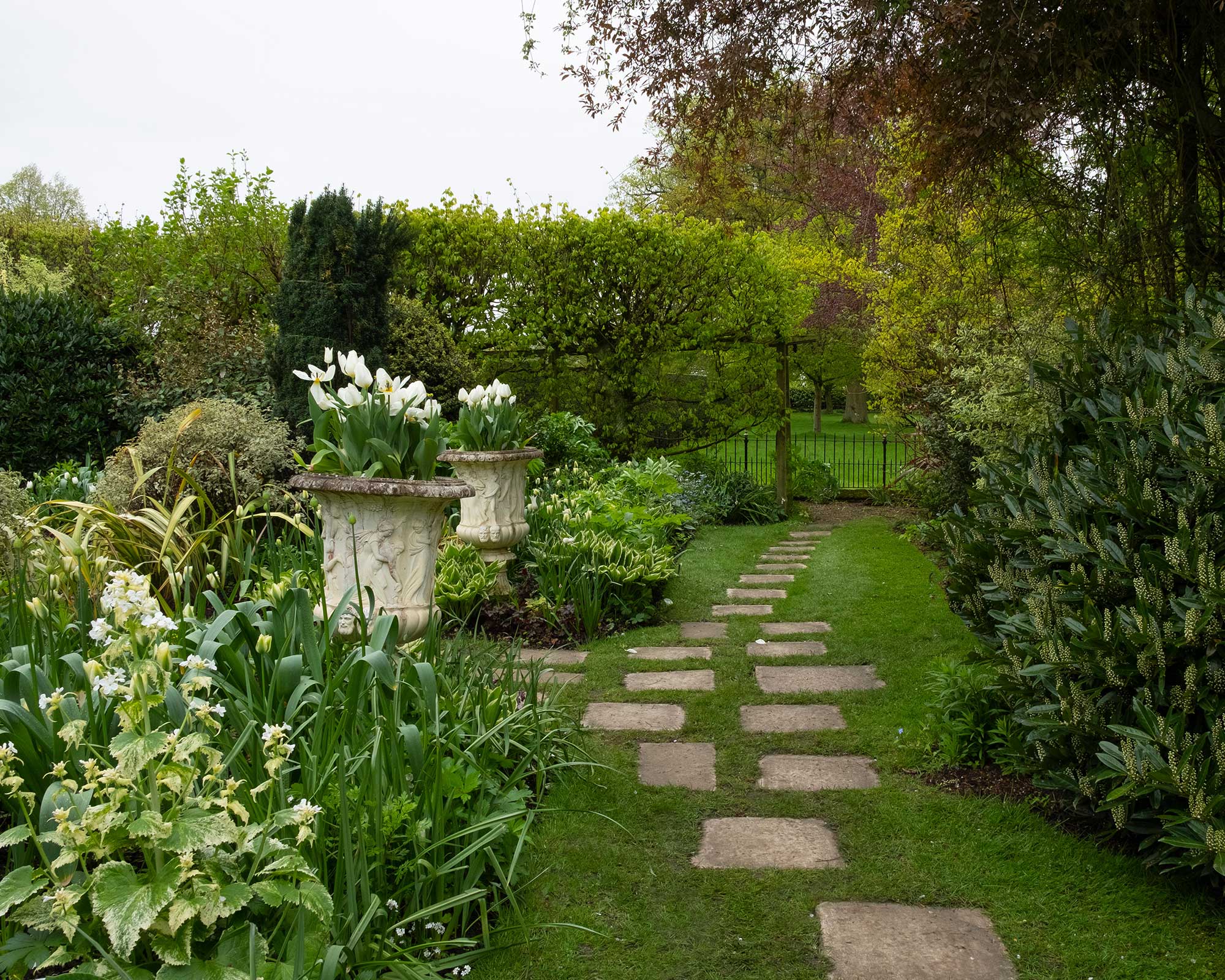

The garden was always a big part of Holly's life growing up, as was the surrounding New Forest where she lived. Her appreciation for the great outdoors has only grown since then. She's been an allotment keeper, a professional gardener, and a botanical illustrator – plants are her passion.
